Do it Yourself Weather Vane
Early weathermen and women didn’t use Doppler radar or computers to forecast the weather, they relied on tools that were much more simple. Take, for […]
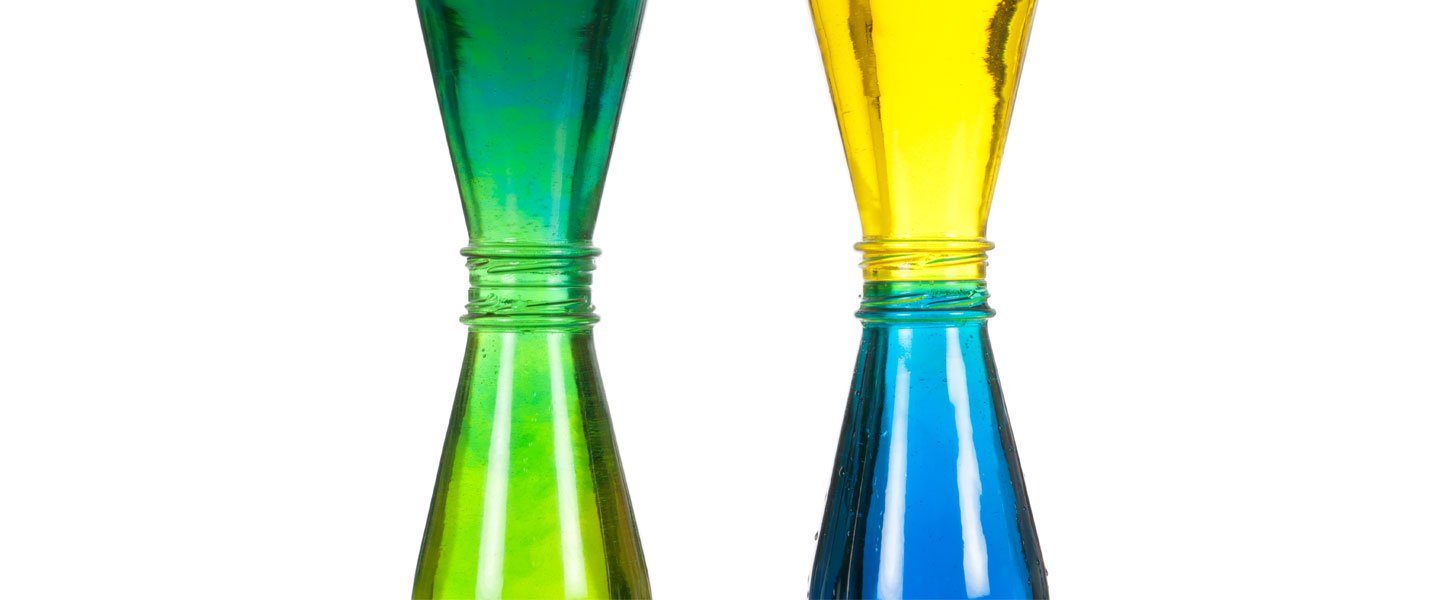
Cool, crisp, clean mountain air has long been an important reason why people move to Colorado, USA. Unfortunately, the air in the city of Denver isn’t quite as clean as it has been. By the 1970s, pollution over the city had a name—the “brown cloud.” Denver’s location at the foot of the Rocky Mountains makes it prone to temperature inversions in which warm air higher in the atmosphere traps cooler air near the ground. This condition prevents pollutants from escaping into the atmosphere. However, the phenomenon of temperature inversion is not unique to Denver, as evidenced by numerous reports of similar brown cloud sightings over major cities throughout the world. This demonstration provides a great illustration of what’s really happening in the atmosphere as hot and cold air masses meet.
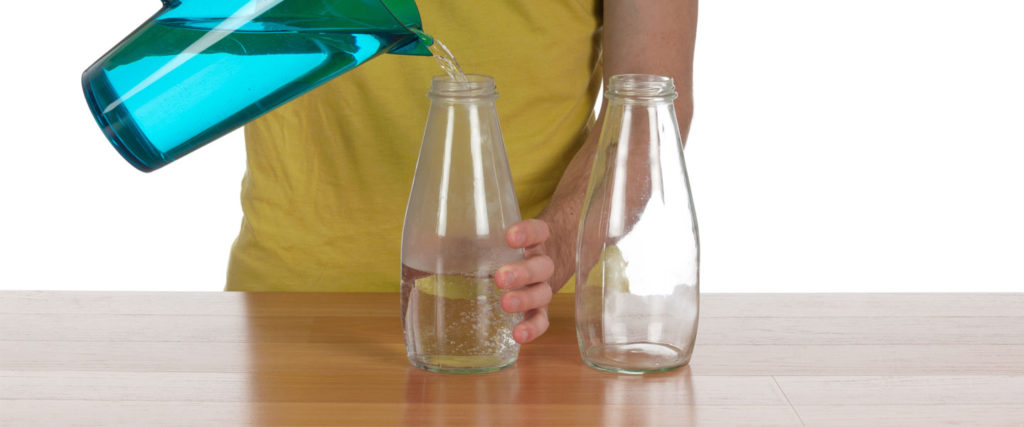
Fill two of the bottles with hot water from the tap and the other two bottles with cold water. Use masking tape and a pen to label the bottles “HOT” and “COLD.”
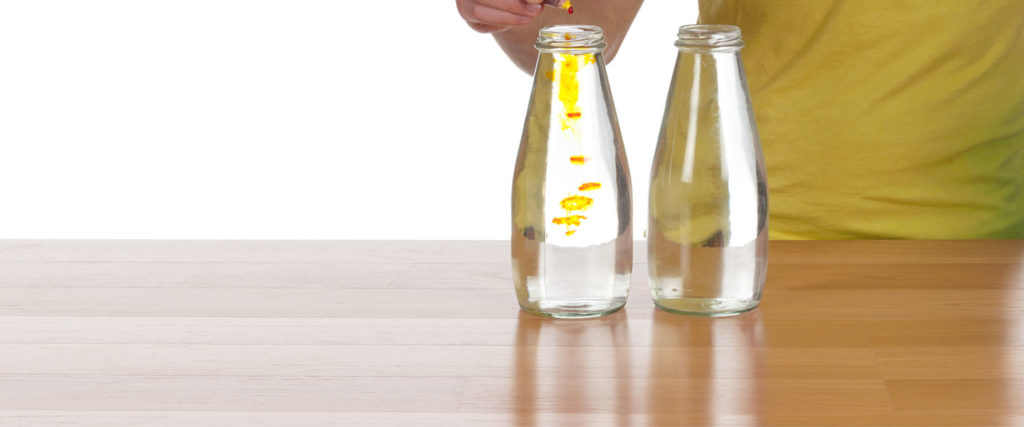
Use yellow food coloring in the warm water and blue food coloring in the cold water. Each bottle must be filled to the brim with water.
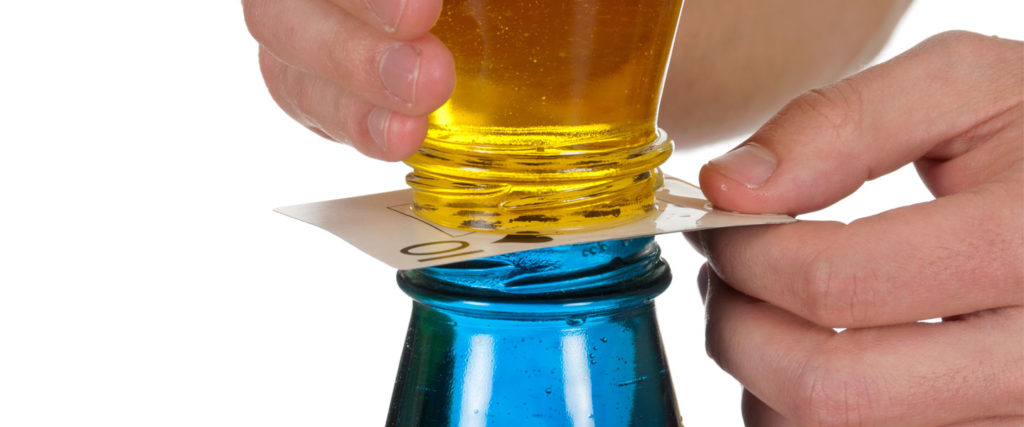
Your first observation will be what happens when the bottle filled with hot water sits on top of the bottle filled with cold water. To do this, place the card over the mouth of a hot water bottle (the yellow water). This can be a little tricky, but with practice you’ll get it. Hold the card in place as you turn the bottle upside down and place it on top of a cold water bottle (the blue water). The two bottles should be positioned so that they are mouth-to-mouth with the card separating the two liquids. (Have paper towels close by in case everything doesn’t go exactly as planned.)
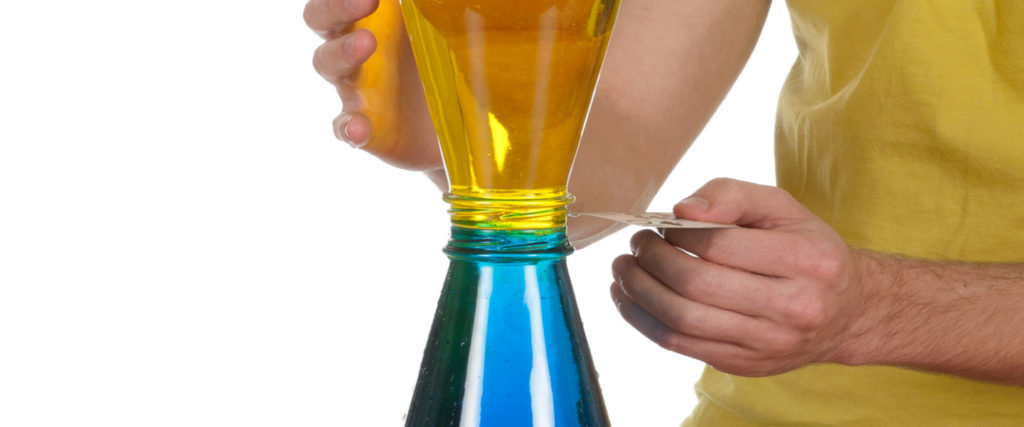
Carefully slide the card out from between the two bottles. Make sure you are holding the top bottle as you remove the card. Watch what happens to the colored liquids in the two bottles with the card removed.
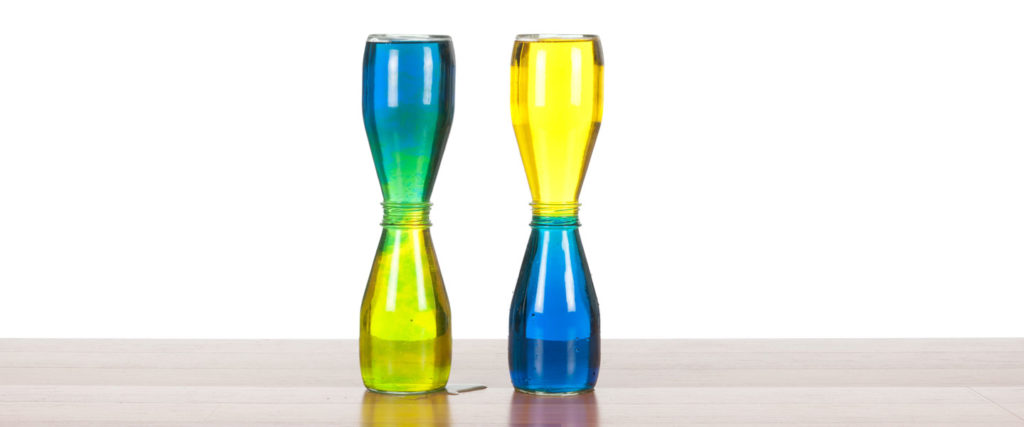
The second part of the experiment is similar to the first. This time, you need to place the cold water (blue) on top of the hot water (yellow). Repeat Steps 3 and 4 and carefully remove the card. Watch what happens this time.
Hot air balloons rise because warm air in a balloon is lighter and less dense than cold air. Similarly, warm water is lighter or less dense than cold water. When the bottle of warm water is placed on top of the cold water, the more dense cold water stays in the bottom bottle and the less dense warm water is confined to the top bottle. However, when the cold water bottle sits on top of the warm water bottle, the less dense warm water rises into the top bottle and the cold water sinks into the bottom bottle. The movement of the water is clearly seen as the yellow and blue food colorings mix, creating a green liquid.
The movement of the warm and cold water inside the bottles is referred to as a convection current. In our daily life, warm currents of water occur in oceans. The warm Gulf Stream moves northward along the American Eastern Seaboard and crosses the Atlantic Ocean all the way to Europe. Convection currents in the atmosphere are responsible for the formation of thunderstorms as warm and cold air masses collide.
Although the colored liquids that mix are more interesting to watch, the other set of warm and cold water bottles helps to illustrate an important phenomenon that can occur in the atmosphere in cooler months. During daylight hours, the Sun heats the surface of the Earth and the layer of air closest to the Earth warms. This warm air rises and mixes with other atmospheric gases. When the Sun goes down, less dense warm air higher in the atmosphere blankets the colder air closer to the surface. Because the colder air is more dense than the warm air, the colder air is trapped close to the Earth and the atmospheric gases do not mix. This is referred to as a temperature inversion.
What are the results of a temperature inversion in the atmosphere? Air pollution is much more noticeable during a temperature inversion since pollutants such as car exhaust and particulates are trapped in the layer of cool air close to the surface. As a result, state agencies in many parts of the country oxygenate automobile fuels during winter months with additives like MTBE in an attempt to reduce the harmful effects of trapped pollution. It is this trapped pollution that causes the brown cloud effect. Wind or precipitation can often alleviate the brown cloud by stirring and breaking up the layer of warm air that traps the cold air and pollution near the surface of the Earth.